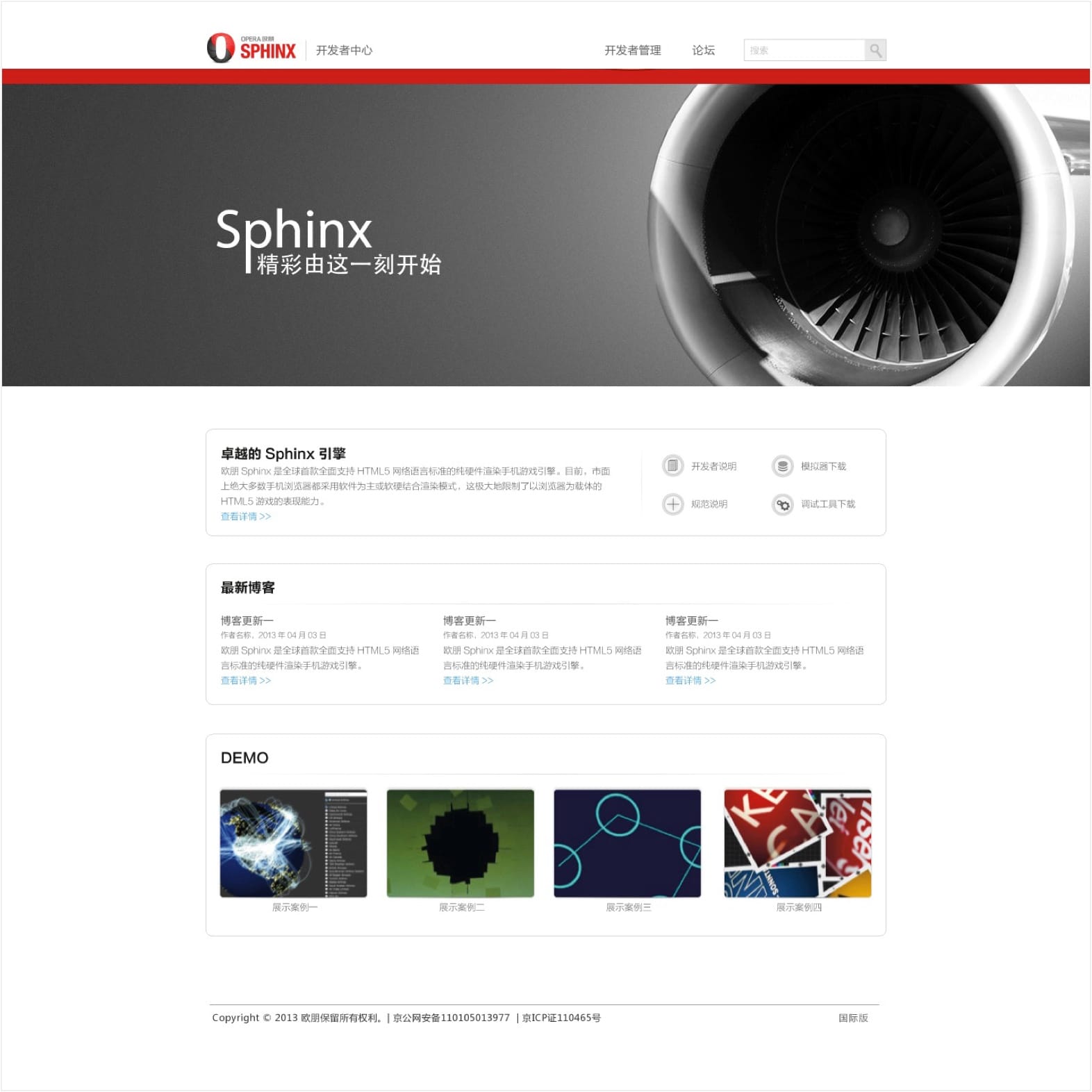Sphinx
A developer platform for packaging and publishing HTML5 games

BACKGROUND
The lack of smooth experience in a mobile HTML5 game is always a big problem for game developers. To make the performance of web game like that of a native game and save game developers from worrying about the performance issue, we build Sphinx, a game engine particularly optimized for HTML5 games. We also provide them a developer platform to package their HTML5 code with our Sphinx engine and download it as an Android app.
MY ROLE
I was the product owner of Sphinx. With clear objectives of building tools to promote the use of Sphinx engine, I worked with 3 different teams to deliver a branding site, an Android emulator and a packaging platform for HTML5 game developers.
THE GOAL
Sphinx is a browser-based game engine optimized for HTML5 games. Our focus was building a developer platform around it to promote the usage of the engine.
THE FINAL PRODUCT
The final product includes the following 3 projects.
- The branding page explains why to use Sphinx and how to develop on it with several tutorials, demos, and blog posts.
- The Android emulator allows users to test on Sphinx and debug through a desktop browser.
- Last but not least, our packaging platform can generate a native Andriod game app from developer's HTML5 files, bundled with the Sphinx engine.

DESIGN PROCESS
Know the users
Since our target users are game developers, I started the project by talking with users and conducting competitive analysis on developer tools, to get a sense of who we were building the product for.
Build consesus
Then I talked with varies stakeholders to understand each project's goals and defined the product scopes with them. After knowing what were needed from me in each project, I also planned my tasks to unblock the teams.
Design and iterate
In each team we had project managers, engineers, and graphic designers, my responsibility fell on the information architecture and interaction designs. For each project, I generated and explored multiple design alternatives, communicated often with stakeholders and internal users for feedback. After that, I built different prototypes for user testing. After iterative testing, we selected a plan and moved to the detailed interface and graphic design to finalize the UI.


THE REFLECT
Our team managed to deliver the whole set of development platform for Sphinx in 3 months, but things changed when Opera switched to Blink engine in February, 2013. As an internal innovative product, the sphinx did not commercialize to a real product. Even though, we still learned a lot through the process and gained a few users when launching the platform.
